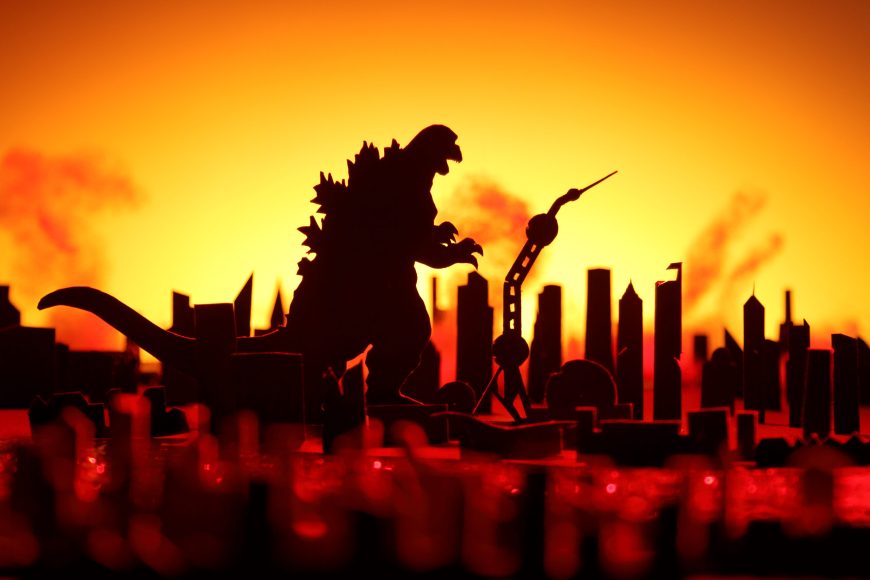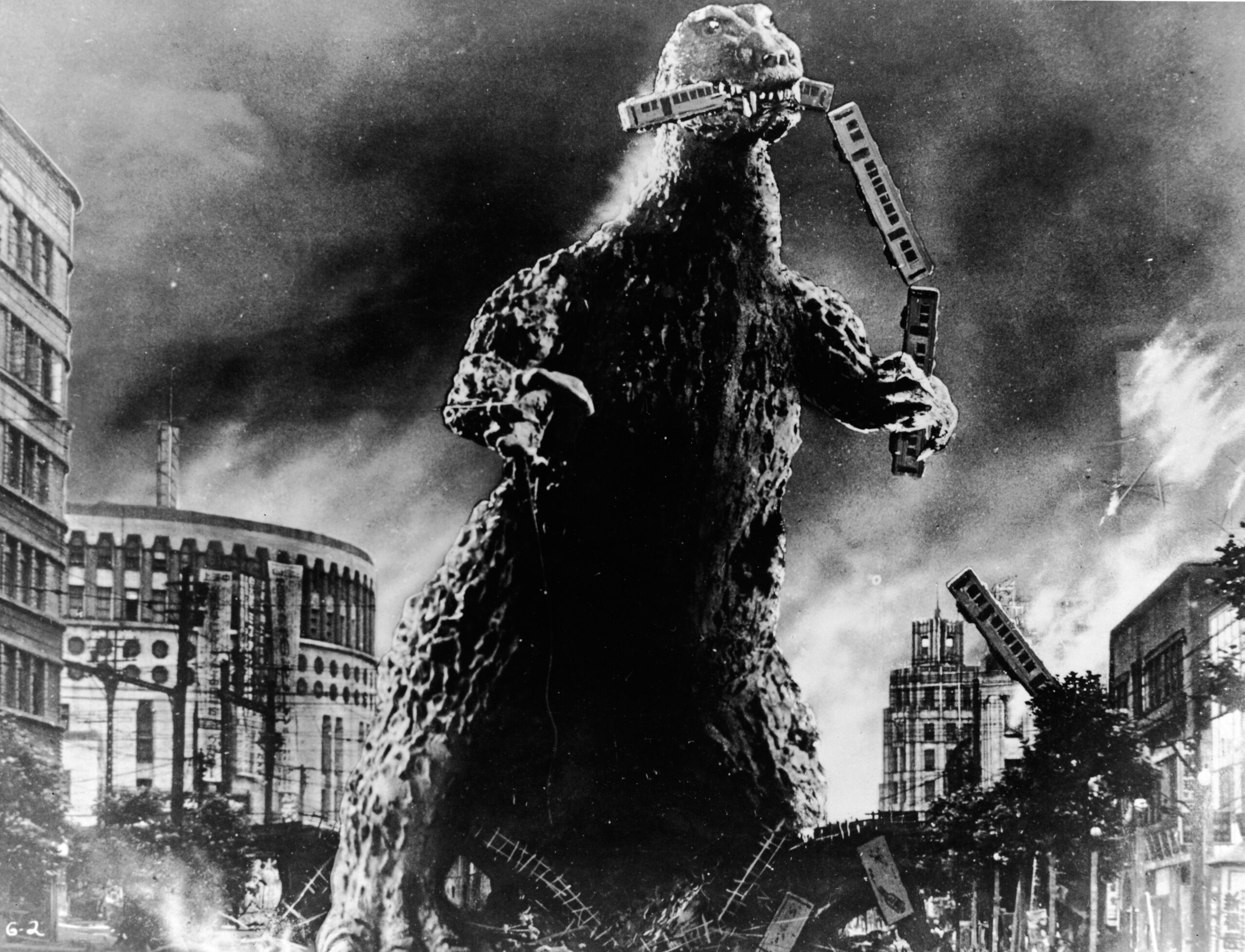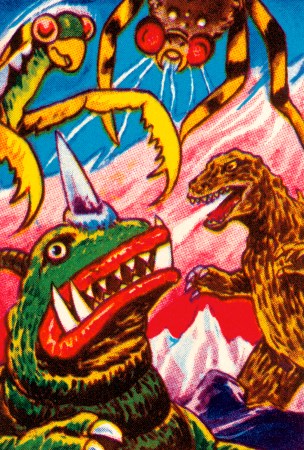Where does Godzilla get his atomic breath?
The kaiju may be chowing down on radioactive rocks — or just need to brush his teeth

In the Godzilla stories, the kaiju’s rampages radiate heat and destruction, powered by his huge size and toxic atomic breath.
gqhaha/Moment Open/Getty Images Plus
Share this:
- Share via email (Opens in new window) Email
- Click to share on Facebook (Opens in new window) Facebook
- Click to share on X (Opens in new window) X
- Click to share on Pinterest (Opens in new window) Pinterest
- Click to share on Reddit (Opens in new window) Reddit
- Share to Google Classroom (Opens in new window) Google Classroom
- Click to print (Opens in new window) Print
Meet Godzilla, a kaiju. This colossal dinosaur-like monster walks on two legs. He has thick, scaly skin. His mouth is full of sharp teeth. And he has a grudge to settle. Godzilla was once a peaceful prehistoric sea creature. But nuclear bomb tests polluted his underwater home with massive amounts of radiation.
Newly mutated and furious, Godzilla rose from the ocean off Japan’s coast. He walked ashore, heading for Tokyo. There, he unleashed a rampage. He toppled buildings. And he blasted the city with deadly radioactive beams that shot from his mouth as he roared. After the attack, most of the city was destroyed, on fire or both.
Many of the people in Godzilla’s way were now dead. Any survivors were suffering.
For someone exposed to Godzilla’s fire, the immediate danger would be the burns, says Alex Wellerstein. He is a historian of nuclear weapons at the Stevens Institute of Technology in Hoboken, N.J. Survivors of the initial blast would have to worry about radiation sickness. This happens when exposure to high-energy radioactive particles damages or kills cells in the body. Symptoms include nausea, headache and feeling dizzy and disoriented. It can cause hair loss, internal bleeding and infections. And depending on the radioactive substance and its half-life — how long that substance sticks around — health risks could persist for decades, Wellerstein says. Often, radiation sickness is fatal.
Godzilla first tore across screens in the 1954 Japanese movie Godzilla. Since then, he’s had many different forms in films and books. But most Godzilla forms feature his signature power move: atomic breath. This powerful beam of radiation shoots from his mouth as he roars.
Maybe Godzilla’s awe-inspiring atomic breath could be possible. But it would take some special tricks of biology.

Deadly breath
Godzilla’s atomic breath almost always appears as a tightly focused beam. But a blast of pure radiation would, well, radiate — spread out in random directions. Godzilla’s atomic breath could be full of steam, water vapor or even spit, notes Wellerstein. Such a medium could carry radioactive particles out in a forceful stream. This version of atomic breath wouldn’t look like the atomic-breath attacks in recent movies. There, Godzilla shoots laser-like beams. But it would still be deadly.

No matter the shape of the emitted breath, Godzilla would need a source of radiation. And an attack as intense as atomic breath would take an immense amount of energy. His specialized anatomy includes a bio-nuclear reactor and special organs for storing uranium-235. This is an isotope, or version, of the element uranium that is radioactive. It’s usually the fuel in nuclear power plants. “The uranium-235 isotope in our present world is not very abundant,” says Wellerstein. It would be challenging to imagine [atomic breath] evolving naturally on Earth due to the scarcity of uranium-235. But in a different dimension or planet with higher uranium-235 levels, it could be plausible.
On Earth, uranium can be found in rocks. In theory, Godzilla’s gut could be designed to pull uranium out of rocks, then concentrate and store it.
No lizards are known to eat rocks. But chickens, which are descended from dinosaurs, do eat small rocks. They swallow the rocks whole and store them in their gizzards. This is a special digestive organ unique to birds. Birds lack teeth. So, the gizzard helps grind up their food.
Godzilla could also have a gizzard-like organ for storing and crushing uranium-rich rocks. This could power his bio-nuclear reactor and his atomic breath. But he would need to be constantly eating rocks to replenish his uranium stores. And no matter which version of Godzilla you consider, that’s a lot of rocks. (Maybe this is what he does during his non-rampaging downtime.) “You’ve just got to imagine that biologically, Godzilla works a little differently,” says Wellerstein.
Godzilla, brush your teeth
Maybe Godzilla doesn’t need to munch on mountains, though. Perhaps the radioactivity is coming from some truly awful breath. “If I was going to think about what’s the most noxious breath and lizards, it would probably be a large meat-eating lizard, like a Komodo dragon,” says James Stroud. Stroud is a lizard biologist at Georgia Tech in Atlanta.
The Komodo dragon is an apex predator with extremely sharp teeth. It hunts and takes down large prey. It devours carcasses. It often has rotting meat stuck in its teeth and frequently drinks from bacteria-infested water.
Godzilla is an apex predator, too, and a likely carnivore (look at those teeth!). But he is almost never seen chowing down on animal protein. Godzilla could be secretly eating other kaiju off-screen and getting that rotting radioactive material stuck in his teeth. Or, Stroud proposes, “imagine Godzilla eating workers of a radioactive plant … and that meat stays within his teeth. His breath could then emit radioactivity via the rotting pieces of meat in his mouth.”
But that blast might be deadly for another reason. Stroud adds, “The breath would smell horrendous.”







